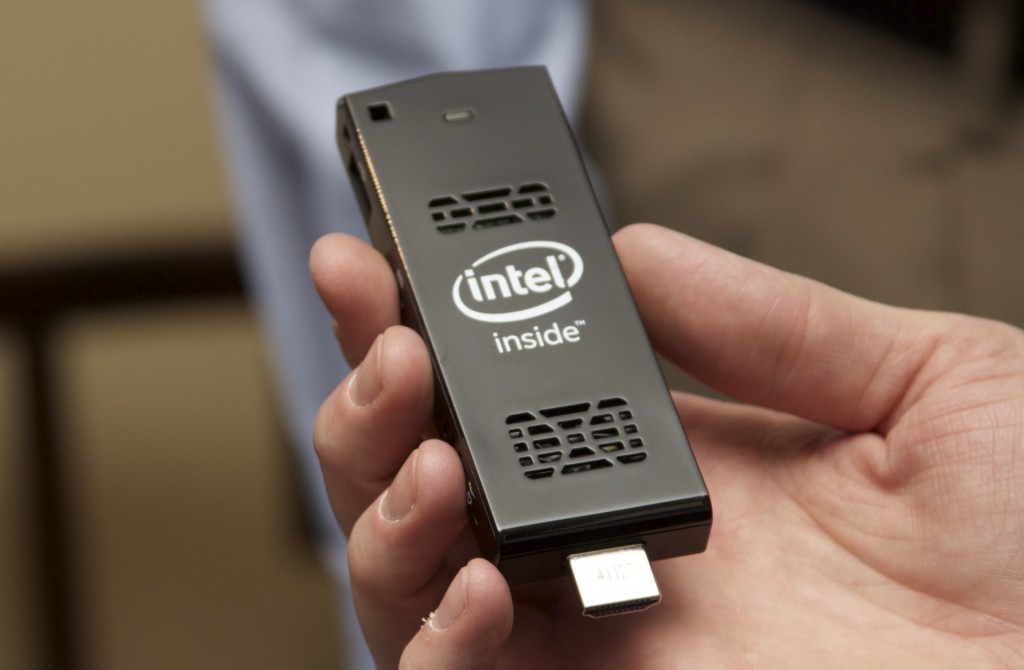 The world’s first electronic computer, the ENIAC, is probably bigger than the room you are sitting in now, and caused mini-blackouts whenever it was in use. That was back in 1946, and 69 years later, Intel has released the Intel Compute Stick, a computer that’s light years faster than the aforementioned monstrosity, small enough to disguise itself among a pile of USB flash drives, and runs on so little power that it adds maybe 2 cents to your next electric bill.
The world’s first electronic computer, the ENIAC, is probably bigger than the room you are sitting in now, and caused mini-blackouts whenever it was in use. That was back in 1946, and 69 years later, Intel has released the Intel Compute Stick, a computer that’s light years faster than the aforementioned monstrosity, small enough to disguise itself among a pile of USB flash drives, and runs on so little power that it adds maybe 2 cents to your next electric bill.
At the price of $150, the Compute Stick runs Windows 8.1 or Ubuntu, has a respectable 32GB hard drive, 2GB RAM, wi-fi, USB, the goods. It is meant to be a fully functioning computer, and setting it up includes plugging the stick to a USB port for power, and the stick itself to a HDMI port on a TV or monitor.
You cannot help but feel a little astonished at how much Intel was able to pack into such a small package. Yet the first rendition of the Intel Compute Stick has so far been met with a fairly uniform reaction: fantastic idea, iffy execution. Turns out the Compute Stick was too small for its own good: it needed an HDMI monitor to be of any use; there is only one USB port to be used between a mouse, keyboard, and other peripherals; and since the Compute Stick is so low powered, it cannot reliably power both Bluetooth and Wi-Fi at once.
So despite its tablet-grade specs and ability to run Windows 8.1, the Compute Stick falls short of being a justifiable PC replacement. A lot of the Compute Stick does not scream “practical”; instead it looks to please the very small niche of users who simply want a plug and play device that can handle browsing the web and streaming Netflix. It will probably explode if you run GTA V, though.
Ironically, while there is value in the Compute Stick’s ultra-mobility, it is also what hinders the Compute Stick from becoming a viable replacement for your computer. Intel needed to strike a balance between affordability and performance with the Compute Stick, and the result was an underwhelming performance complemented at a decent price. With the Compute Stick, however, Intel might be onto something. Whatever they do with the next iterations of the Compute Stick will determine its fate as a niche product or a mainstay in the future.